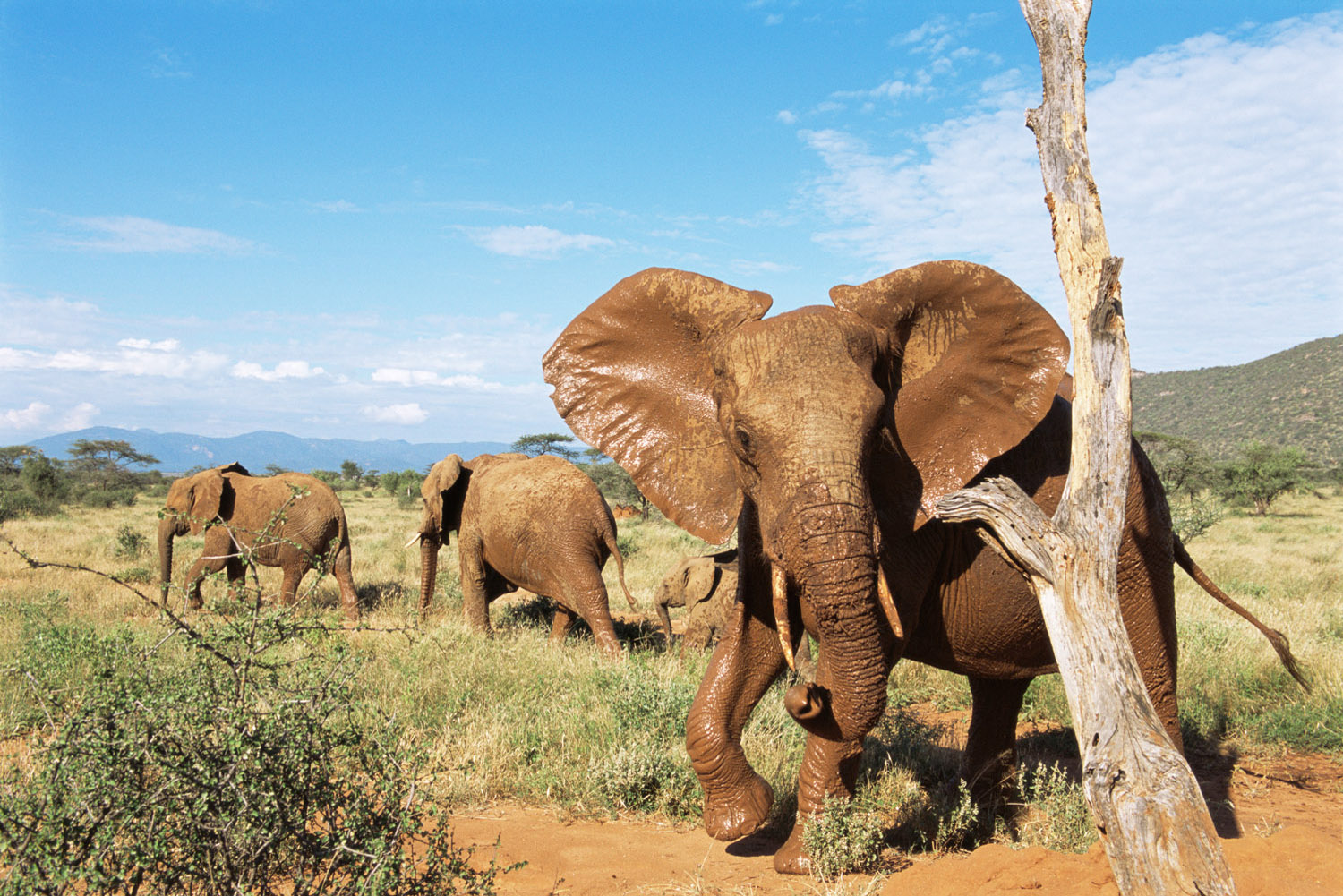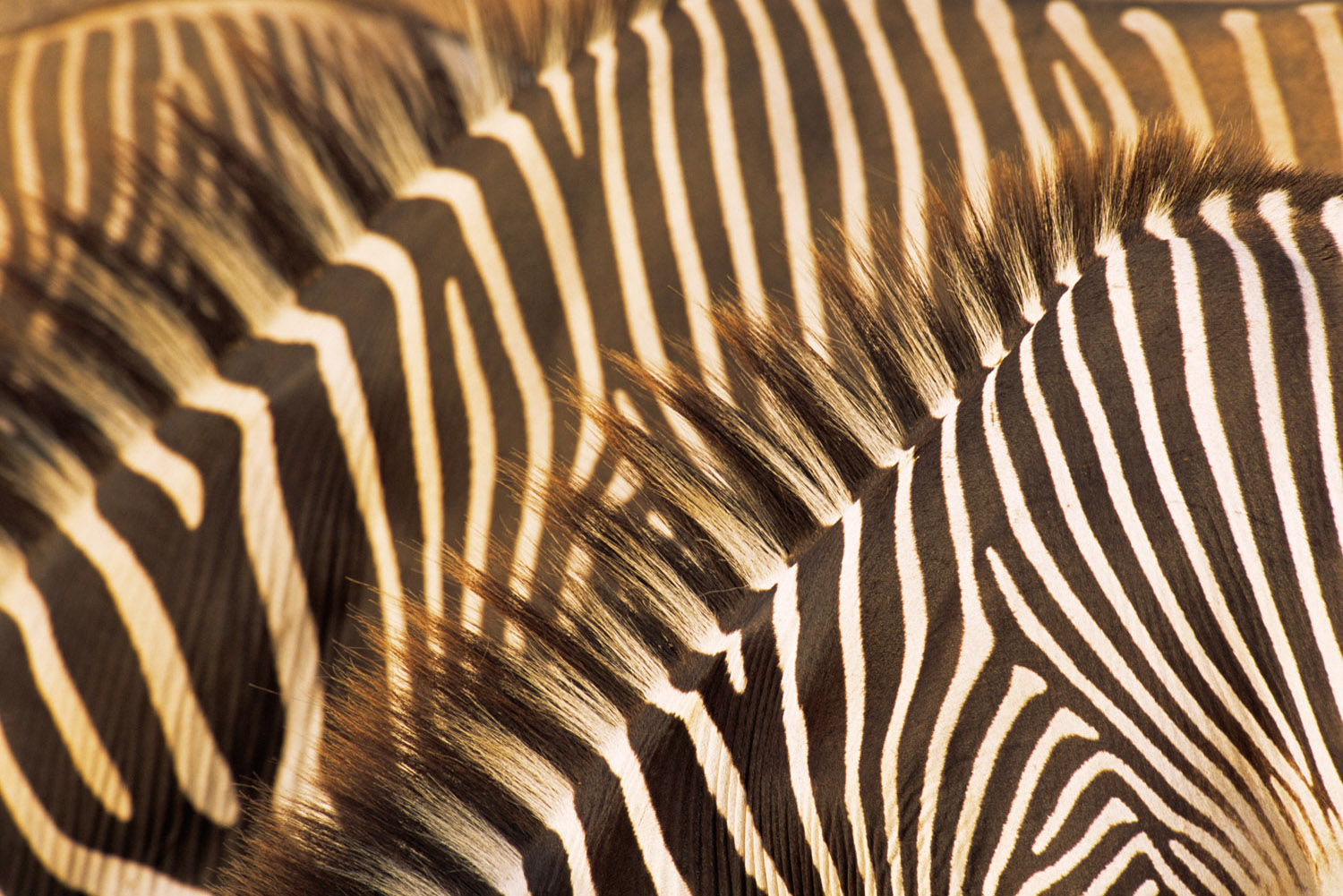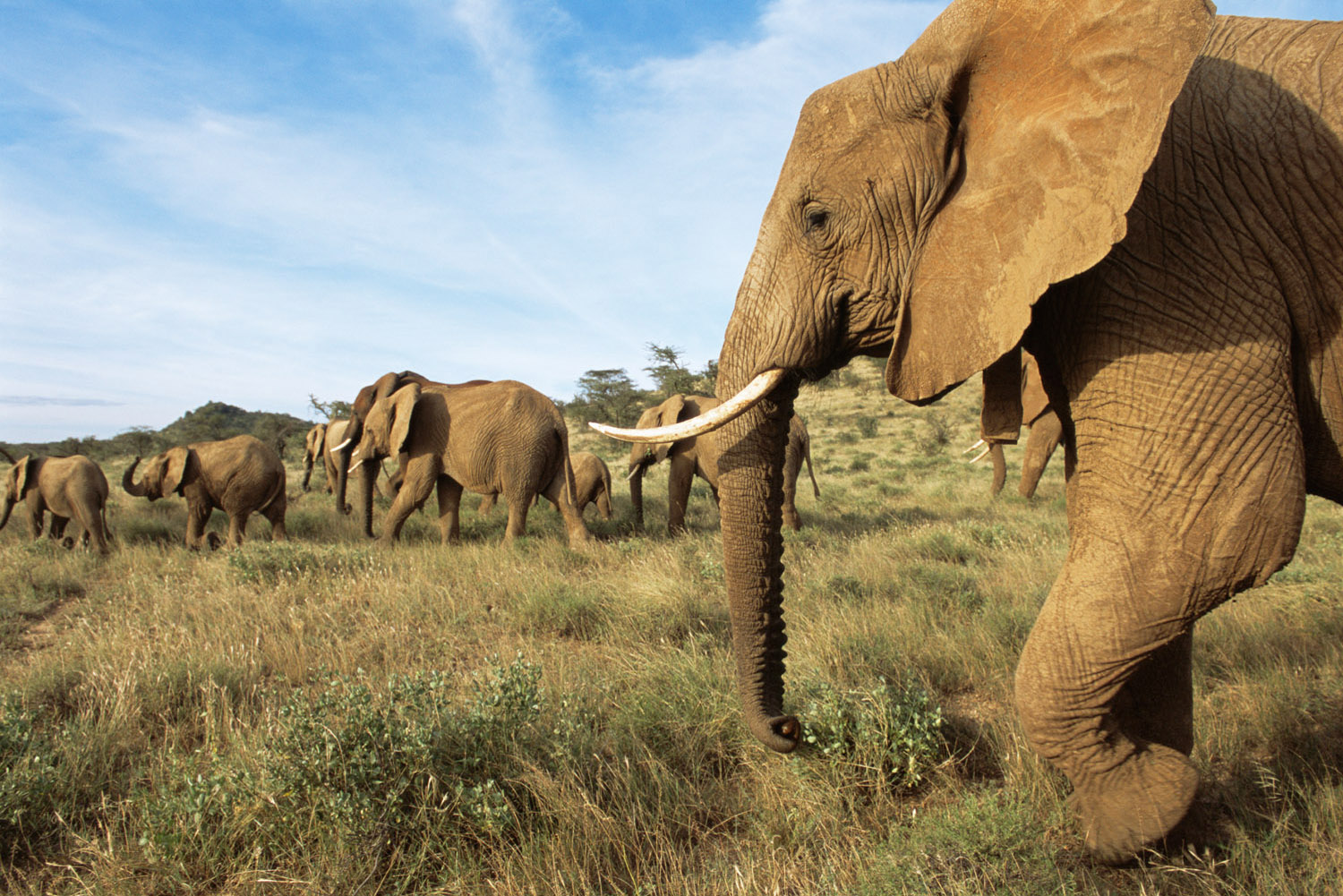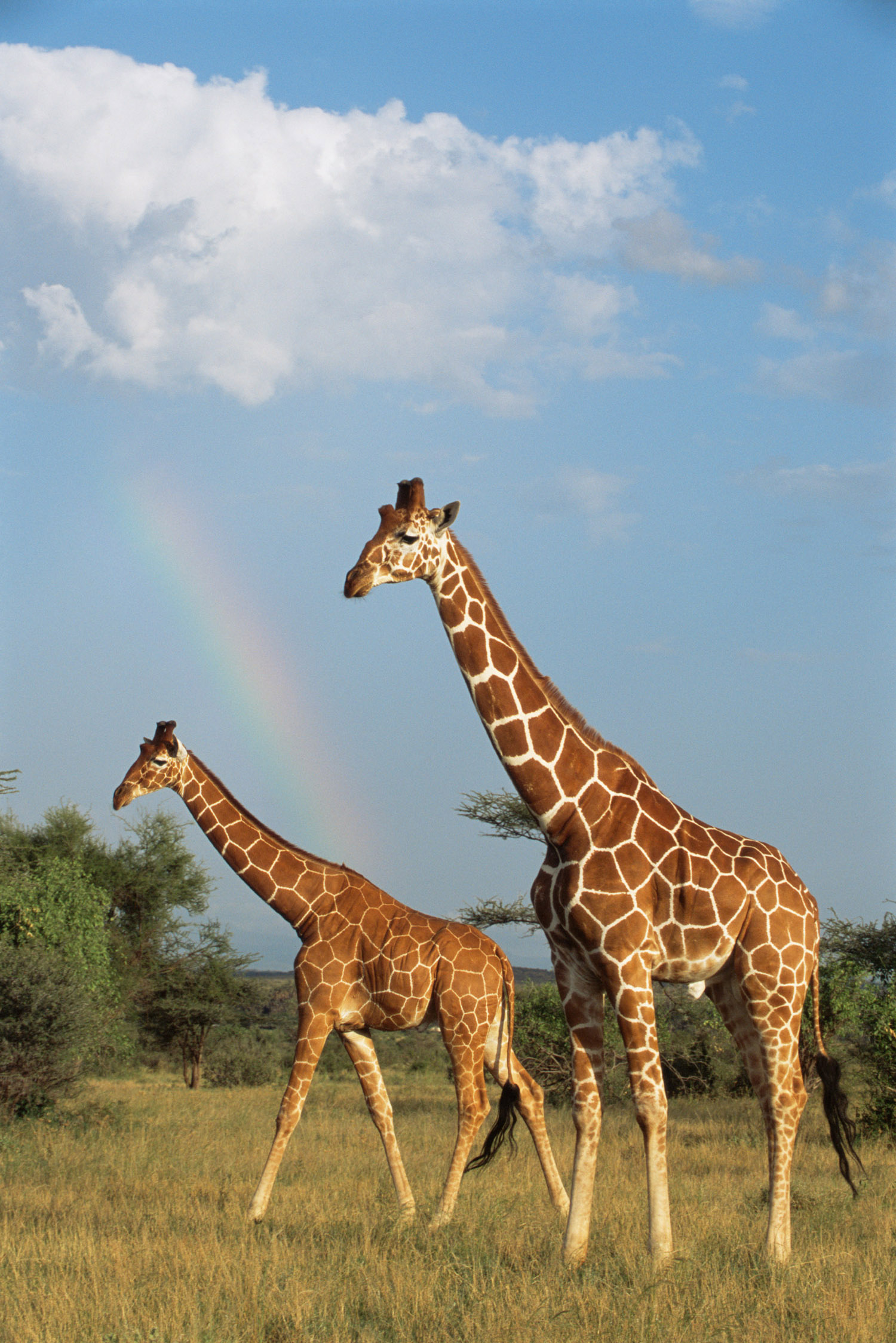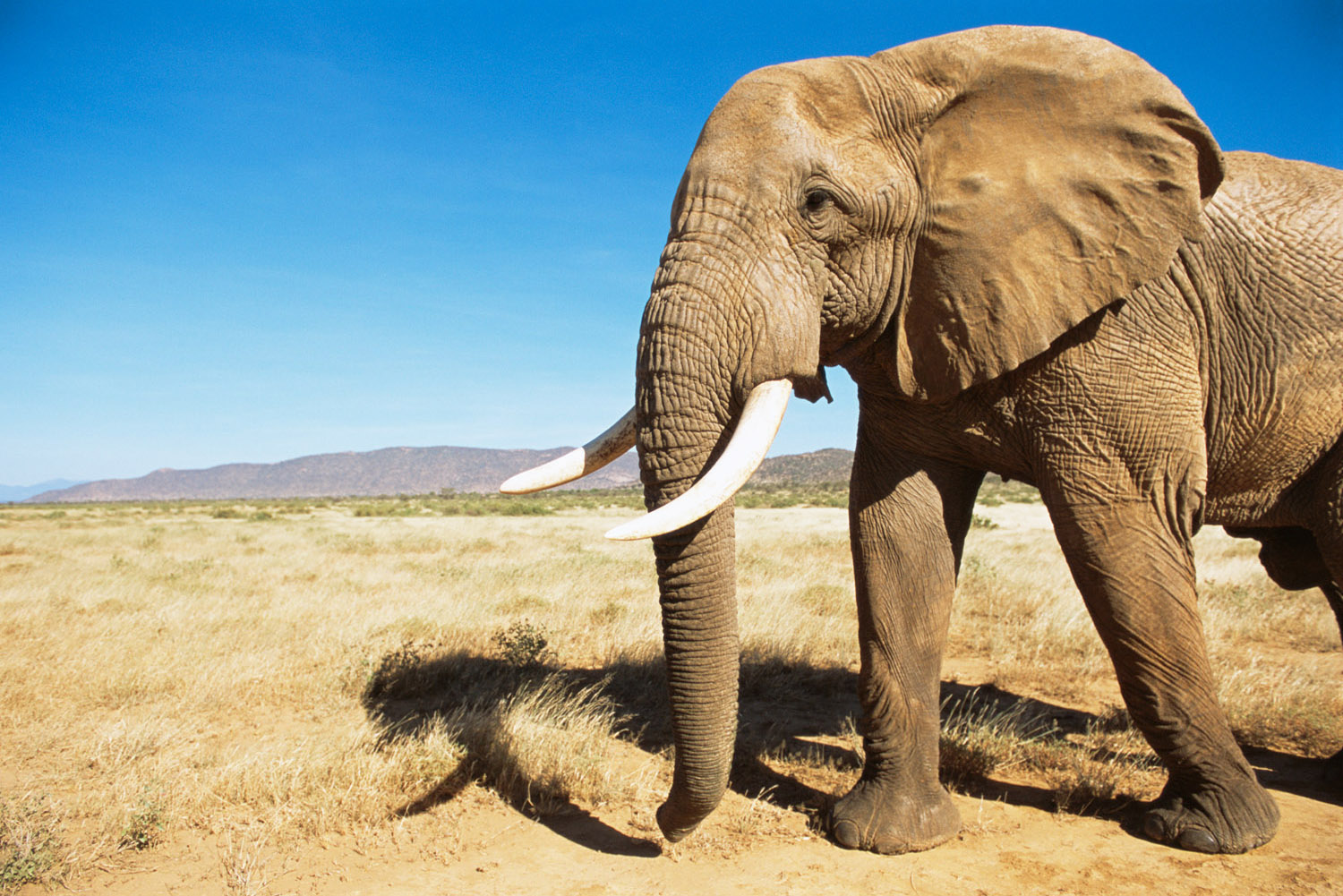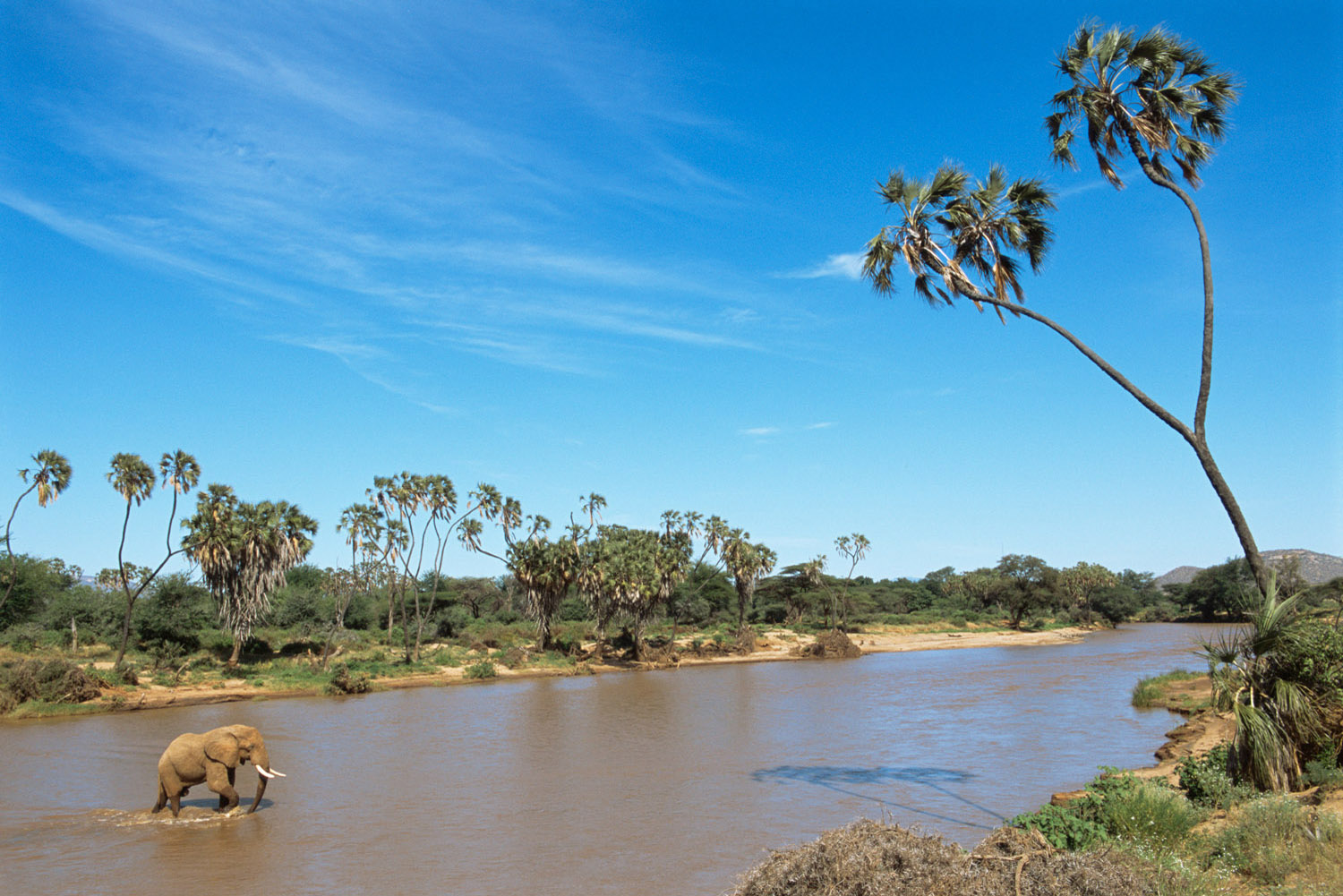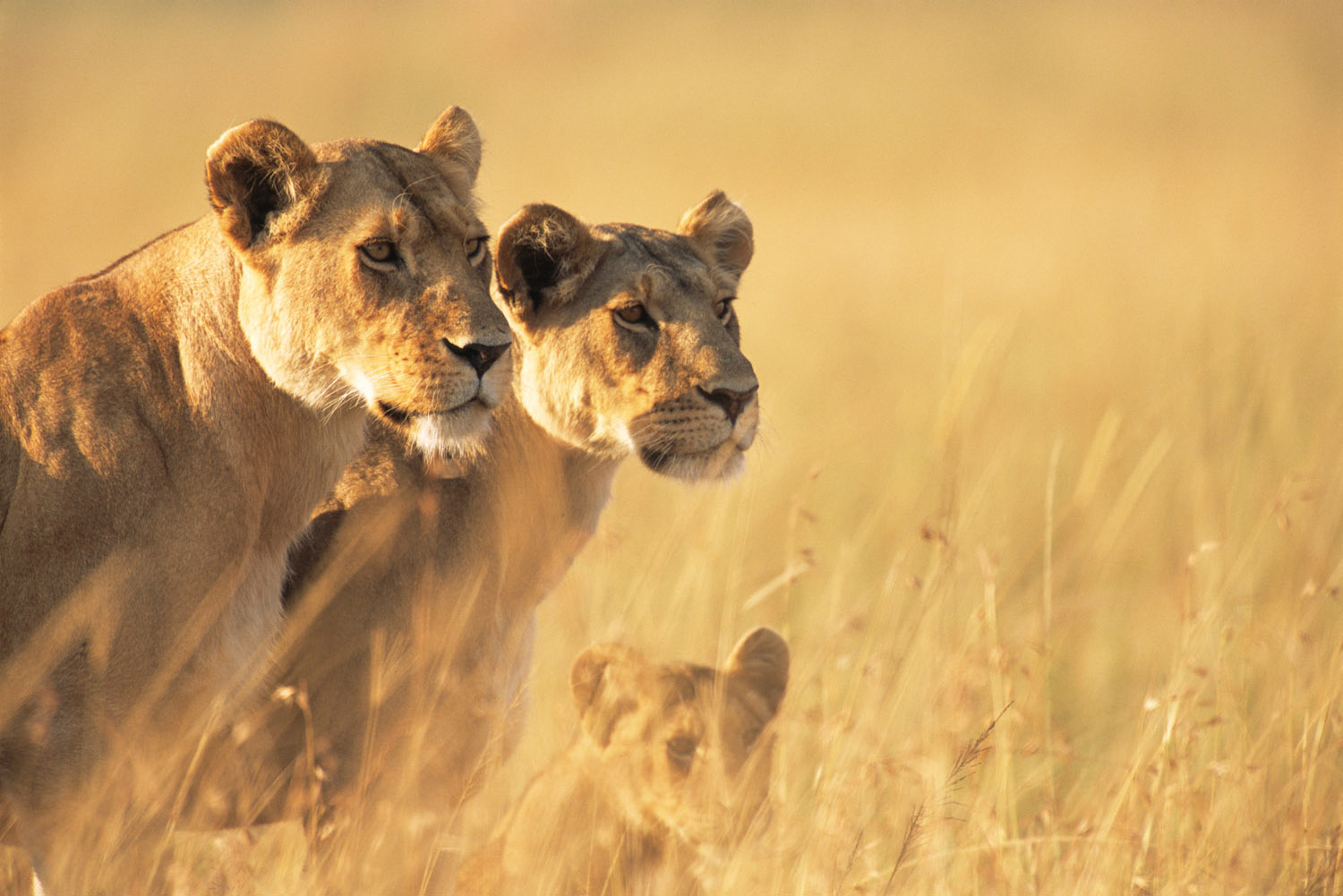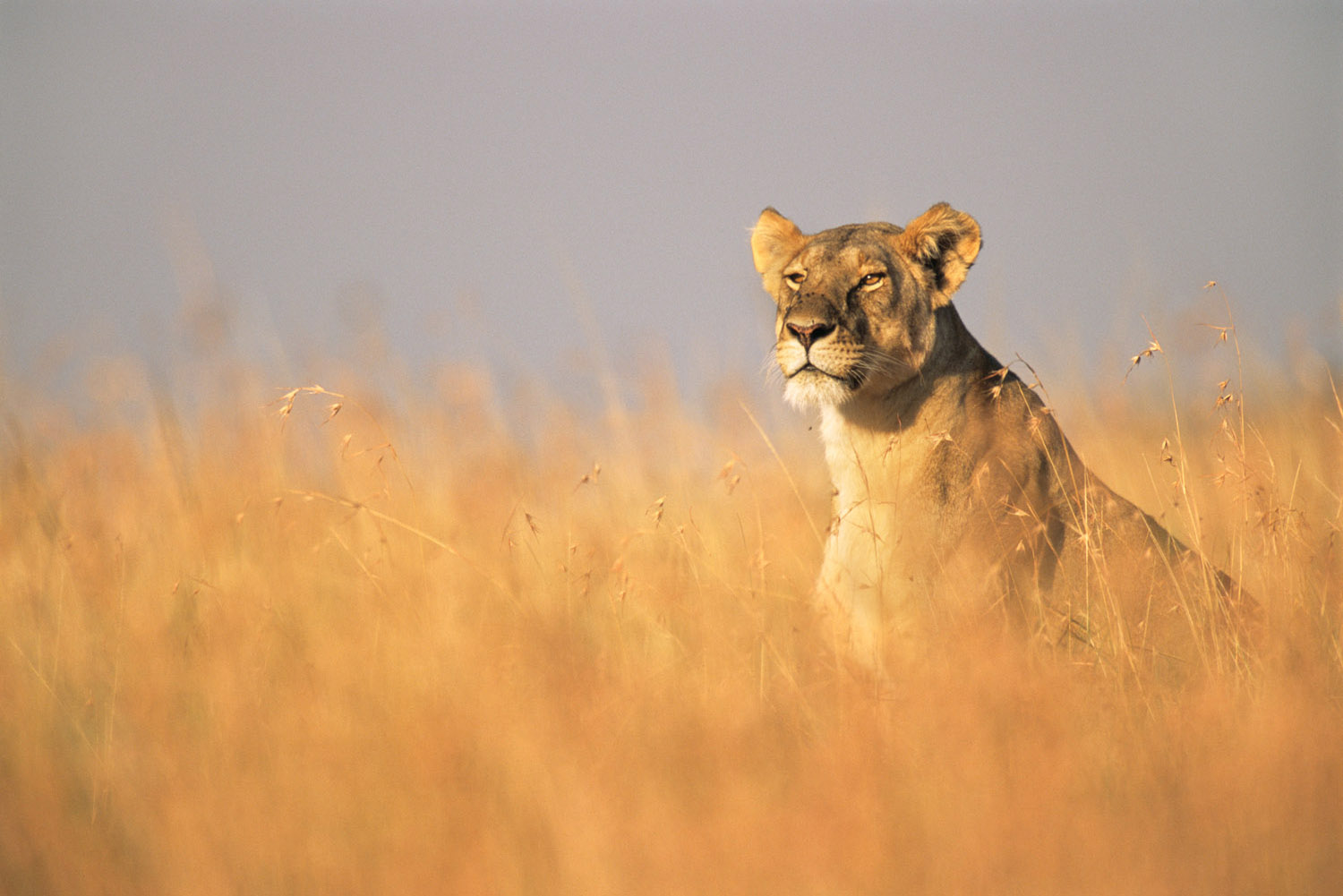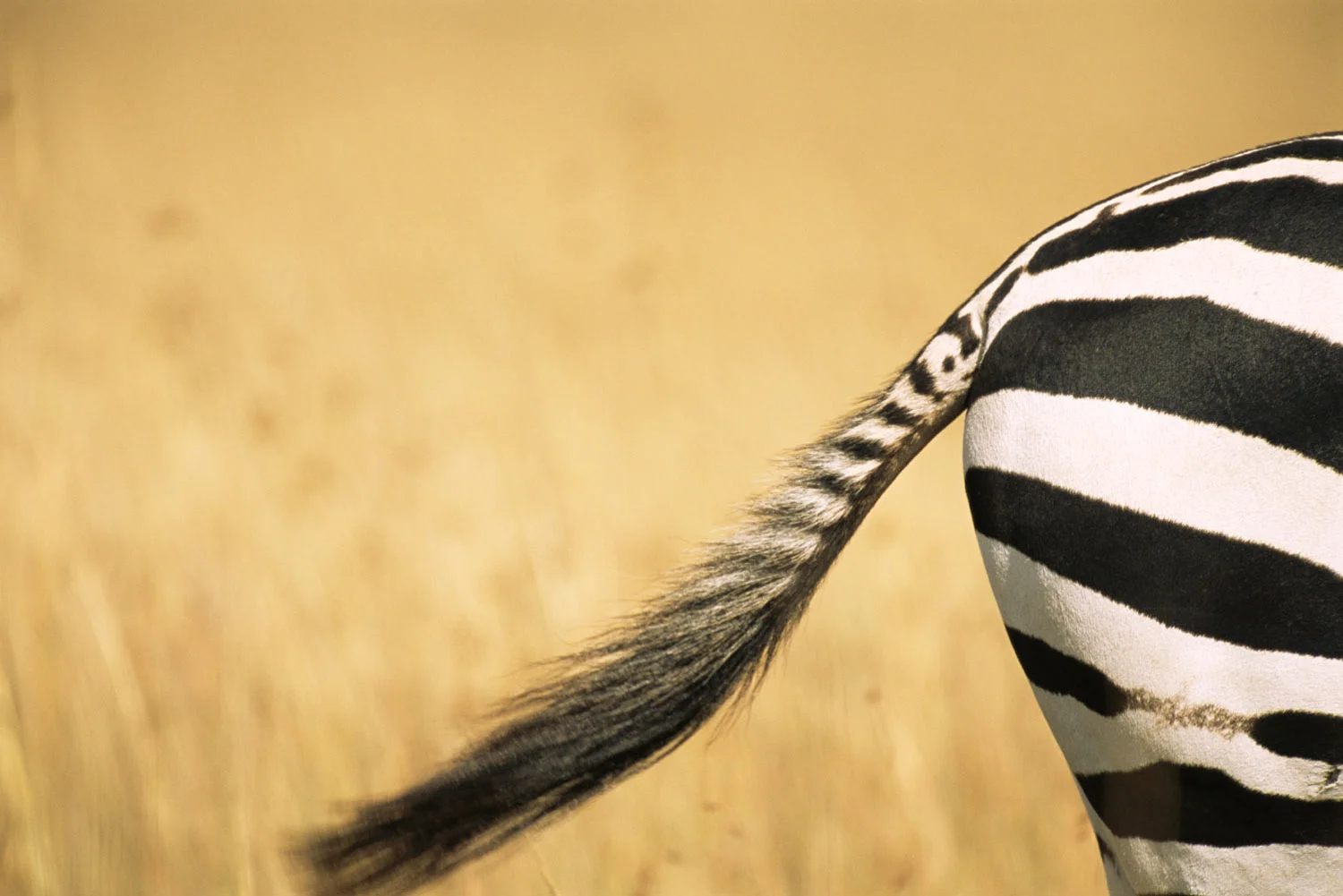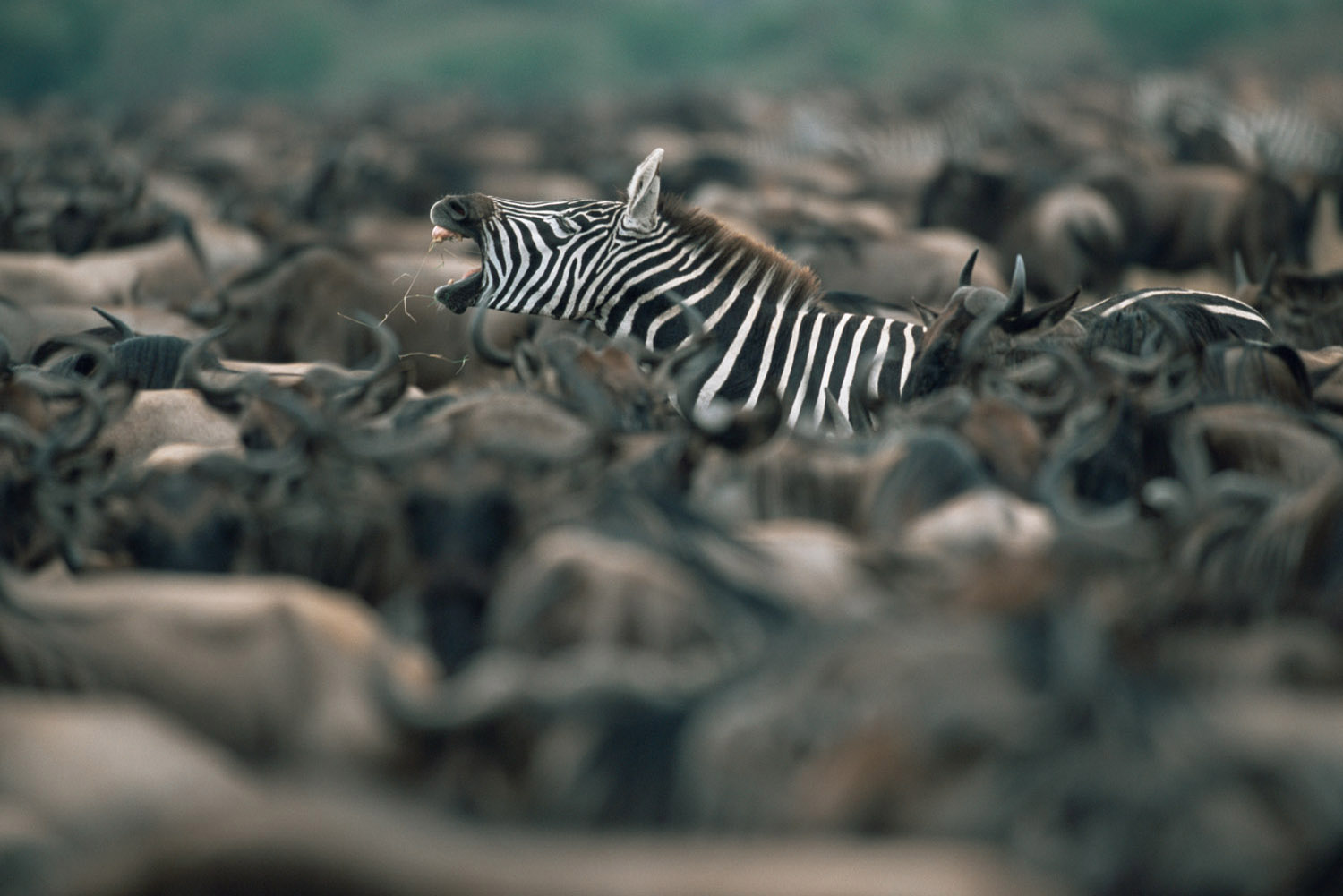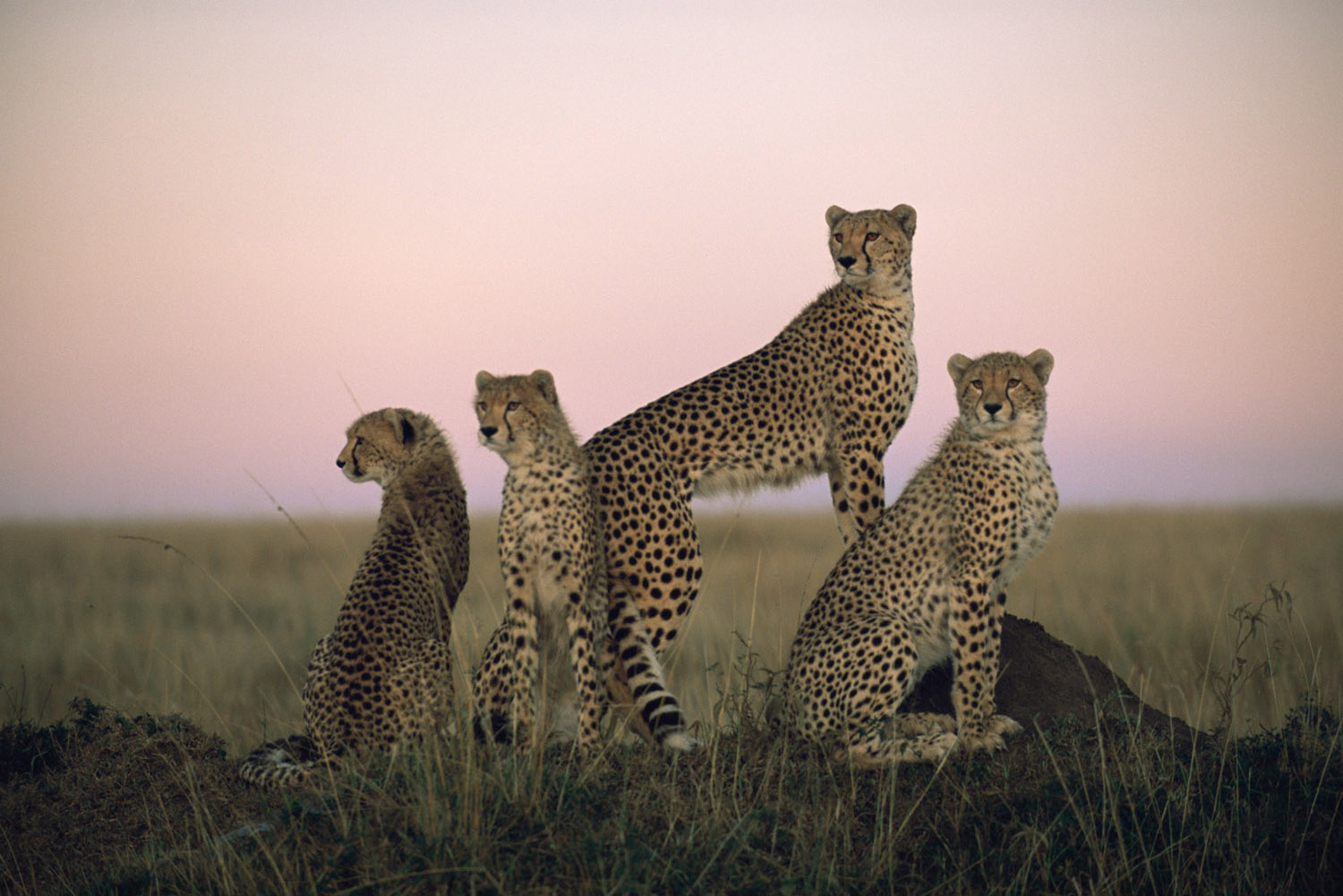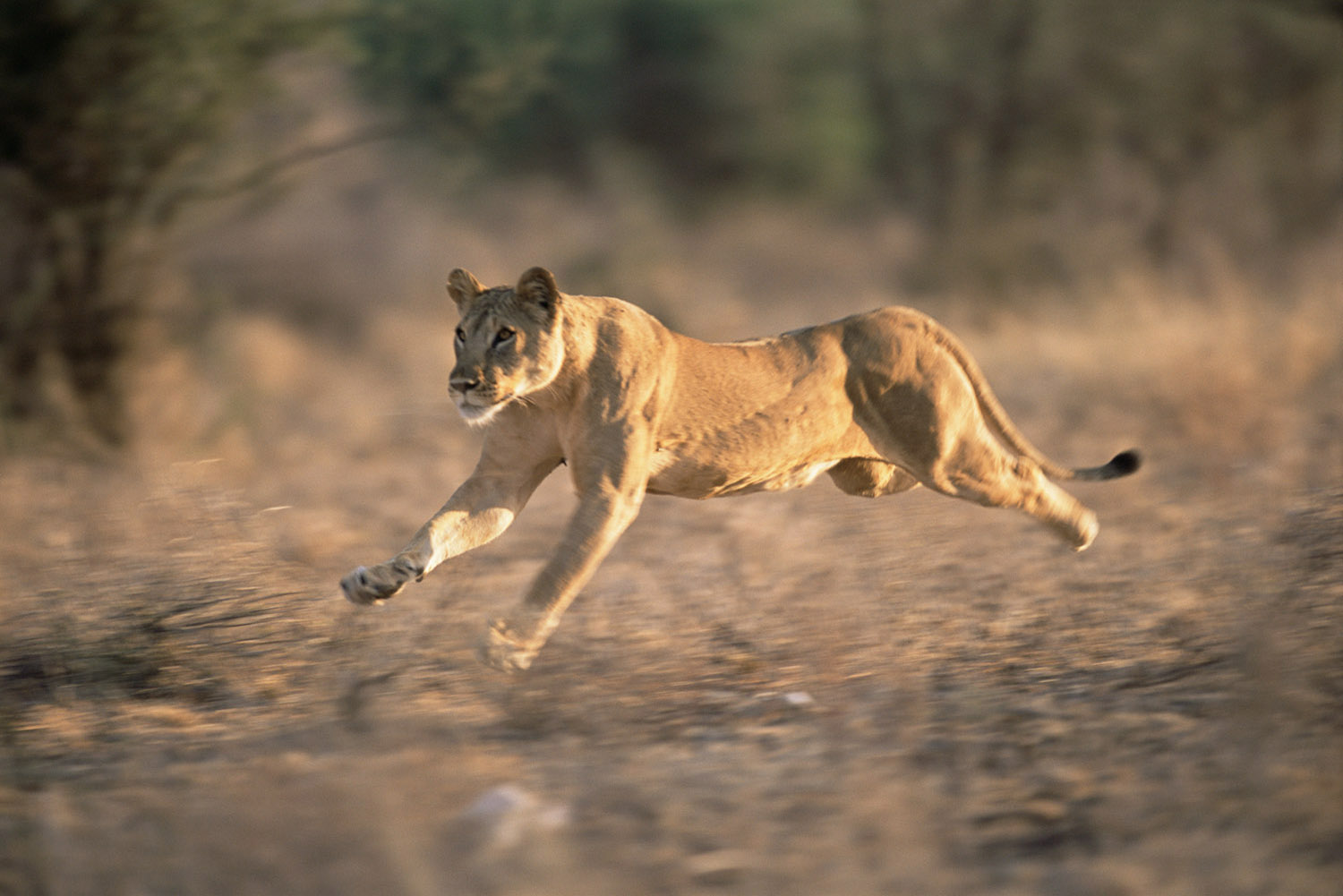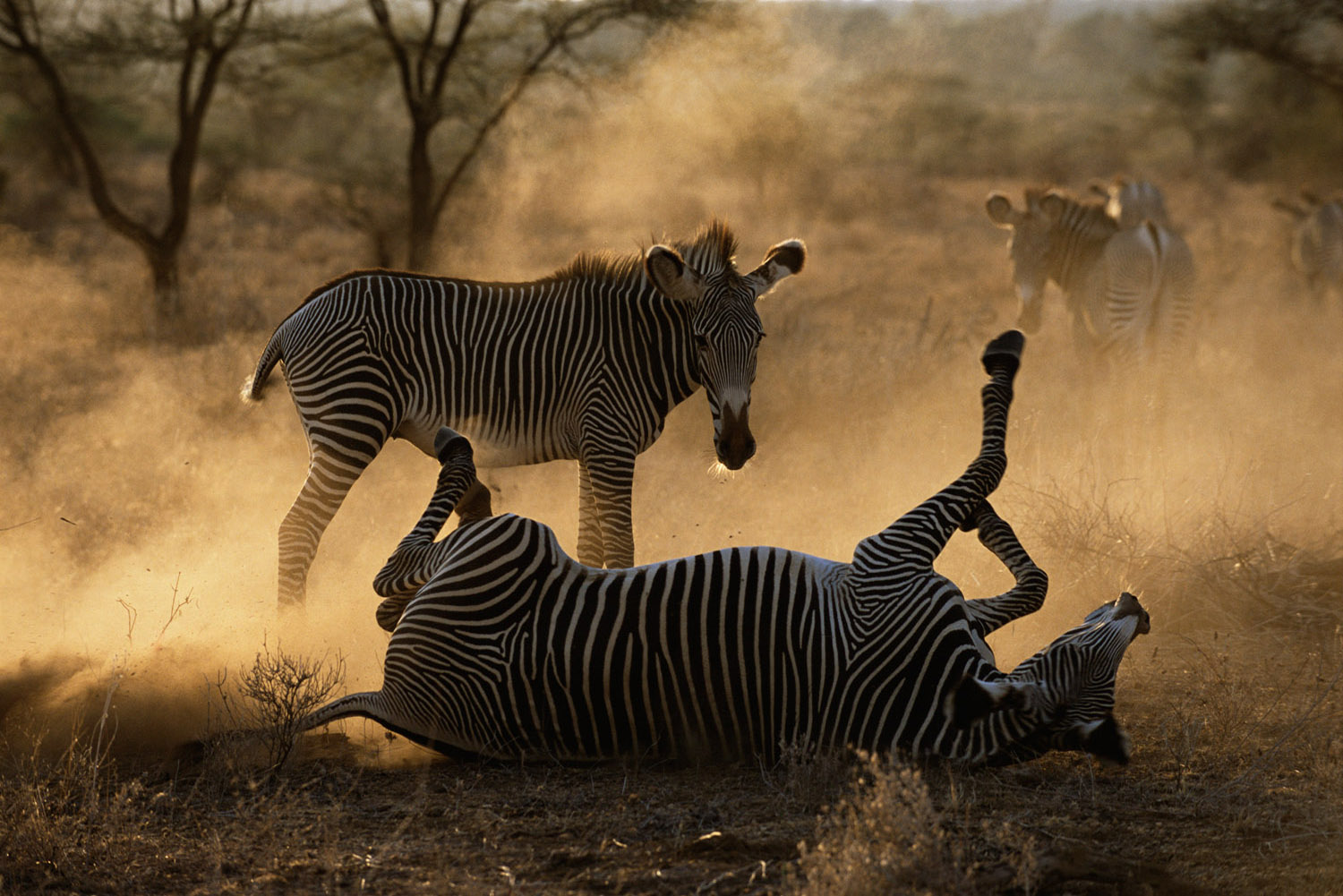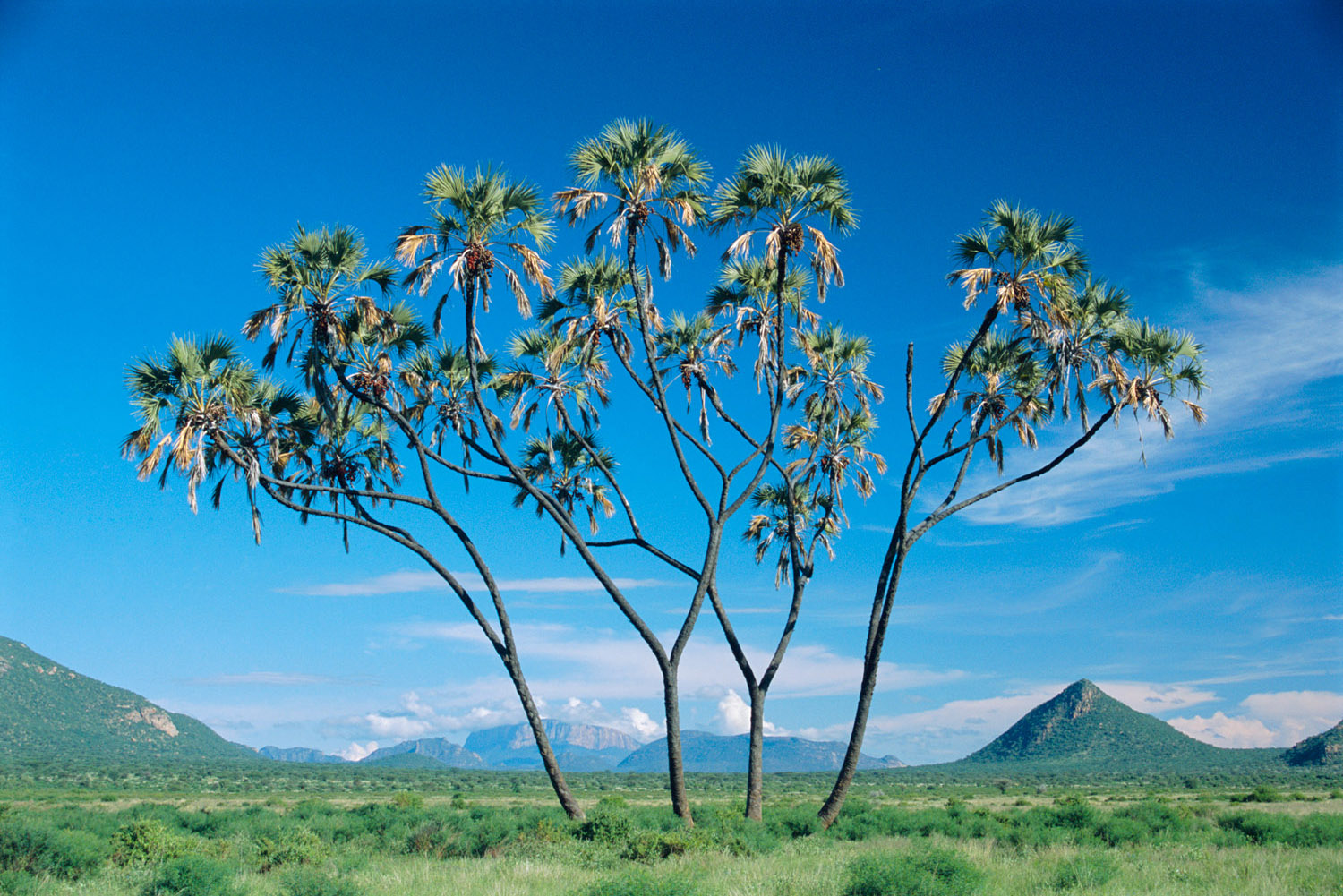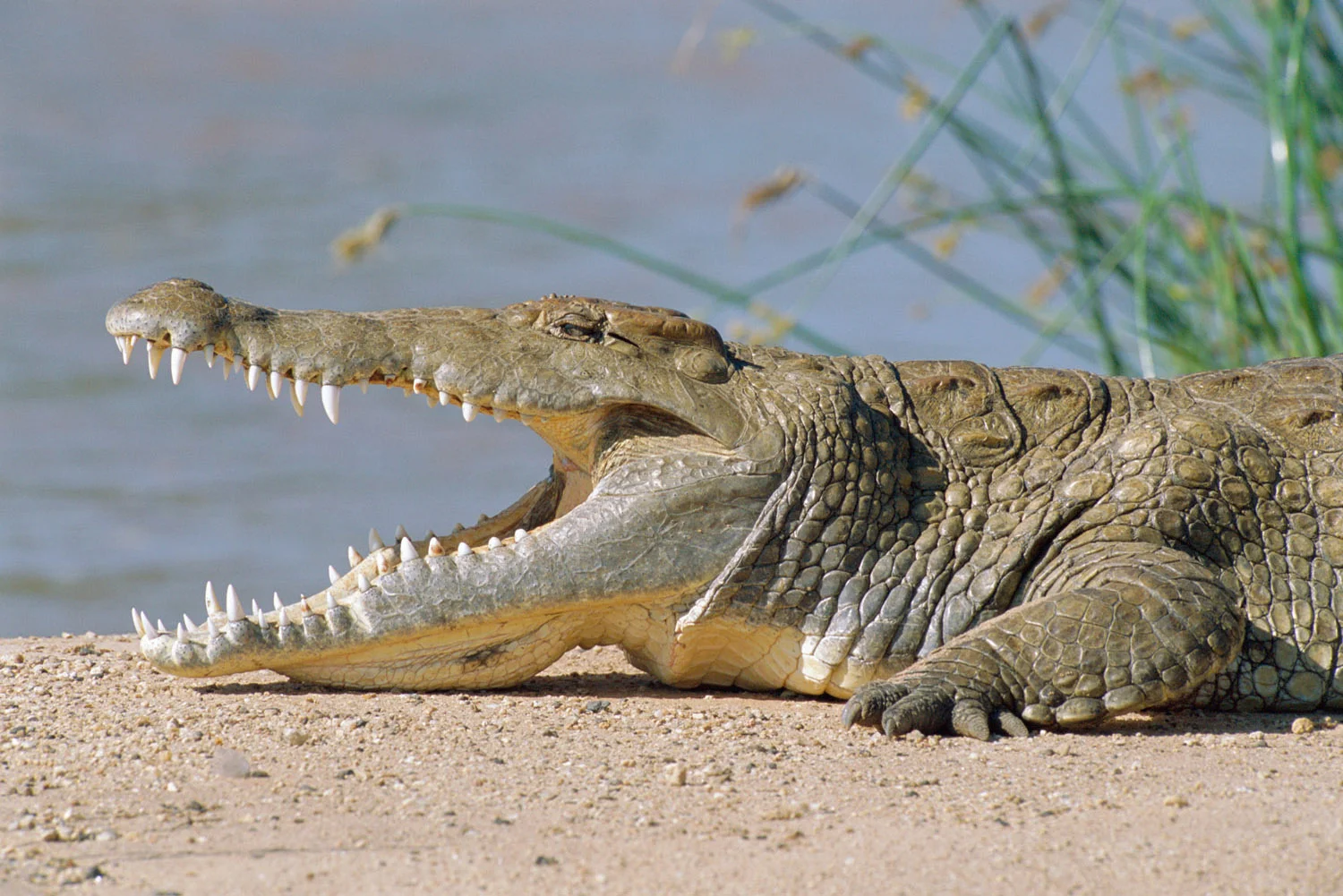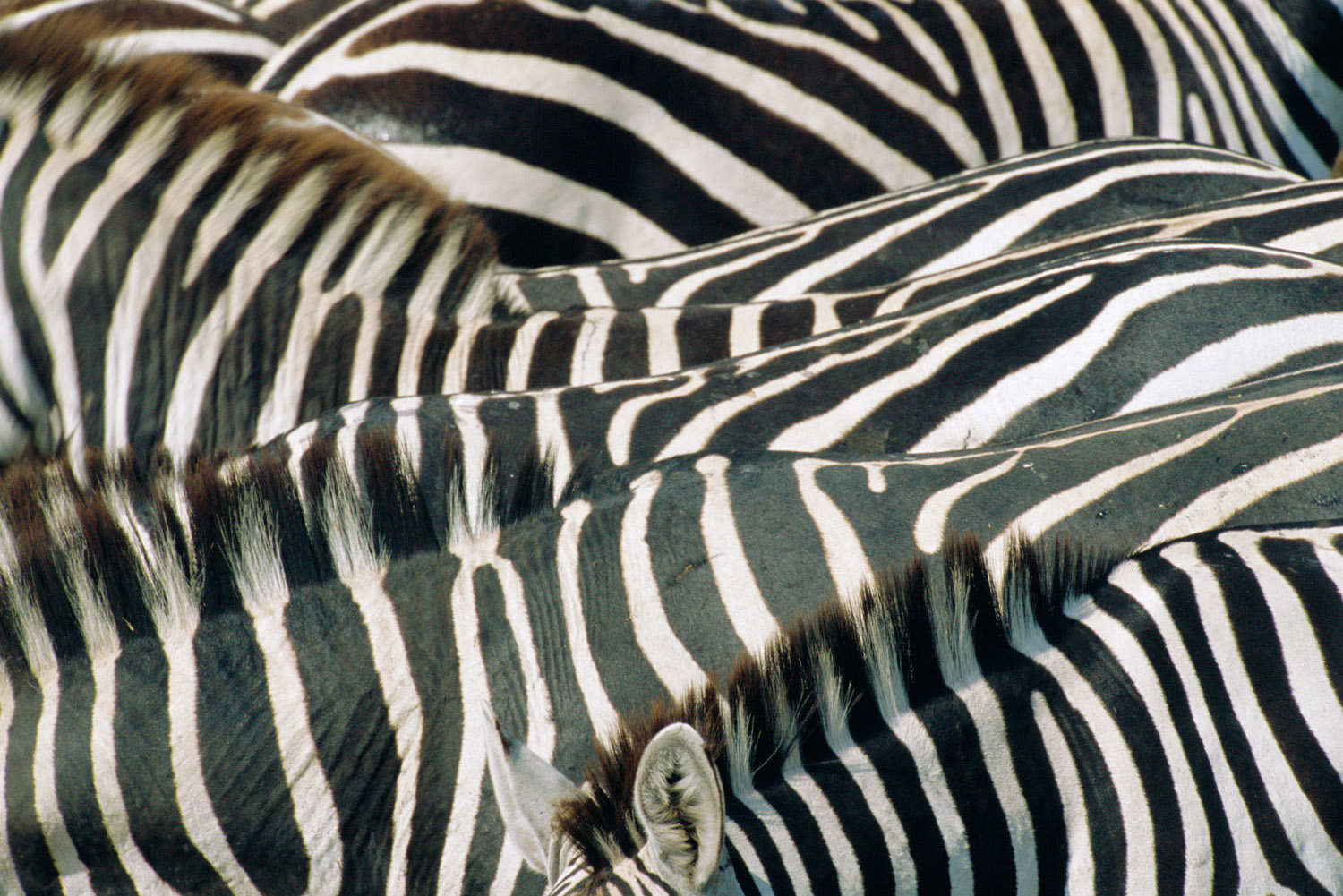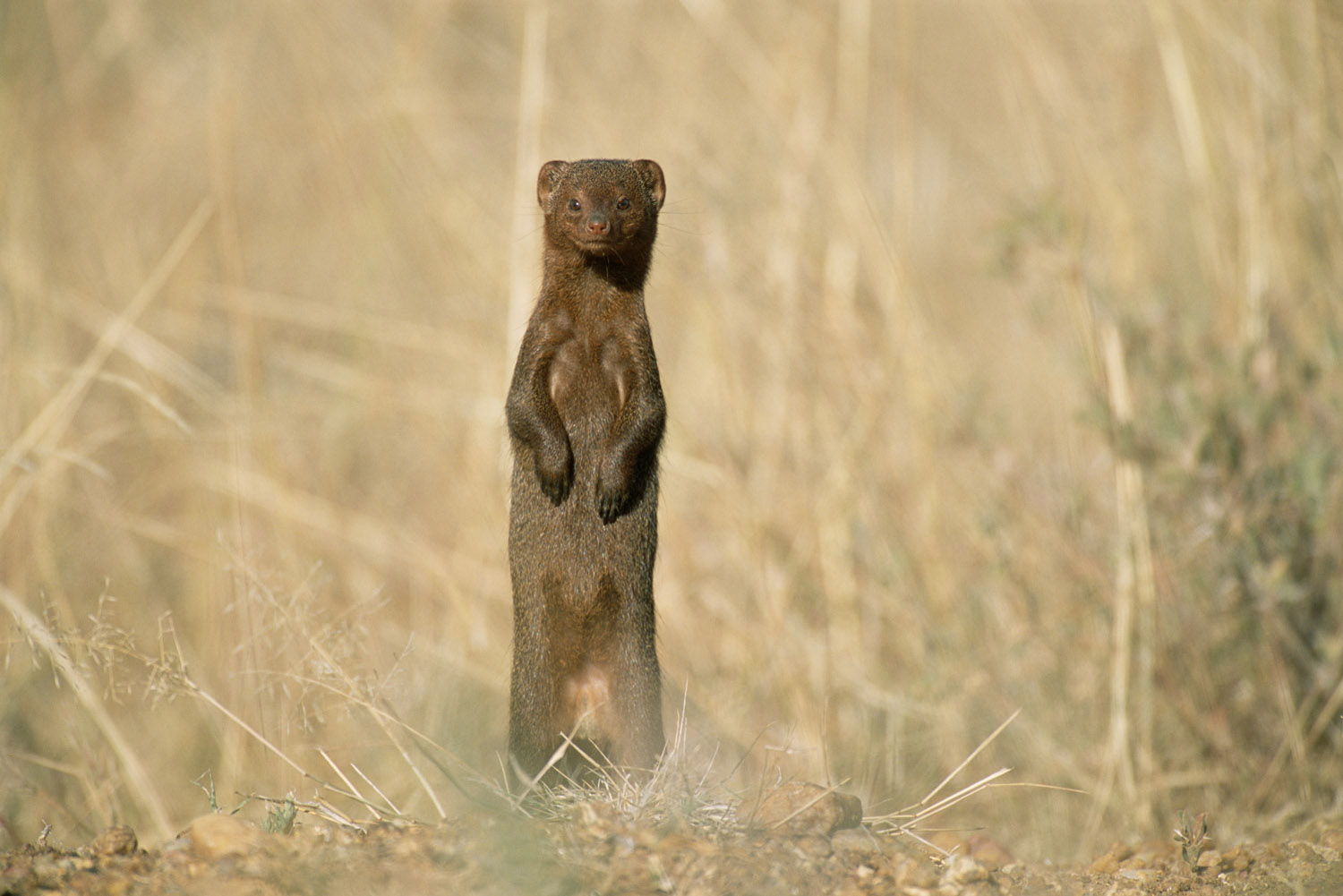BACKGROUND INFORMATION
For a relatively small country, Kenya in East Africa, has an incredibly diverse range of habitats and accompanying wildlife. I've covered some but but no means all of these and have spent the largest proportion of time in Samburu/Buffalo Springs, Masai Mara and Lake Nakuru reserves. Samburu and adjoining Buffalo Springs National Reserves are located in Kenya's arid Northern Frontier District. The scenic beauty and ecological importance of the Reserves centres around the crocodile-infested Uaso Nyiro River which takes its name from a Samburu name meaning 'River of brown water'. The two Reserves lie to the north and south of the River respectively. The Masai Mara National Reserve is a vast area of undulating grassland nearly 2000 metres above sea level, watered by one of Kenya's larger rivers, the Mara and a vital part of the Serengeti ecosystem with its epic annual migration of wildebeest and other mammals such as zebras and gazelles. Lake Nakuru National Park is one of the alkaline lakes of the Great Rift Valley and at times boasts up to 1.5 million lesser flamingos that feed on the blue-green algae that flourishes in these conditions. The Park is also home to 500 other bird species and endangered mammals such as black and white rhinoceroses.
So far I've worked on photo-stories with three conservation organisations in Kenya and they are the Laikipia Predator Project, the Grevy's Zebra Trust and the Reticulated Giraffe Project.
The Laikipia Predator Project based in central Kenya which falls under the umbrella organisation 'Living with Lions'. The Project's main goals are to devise lion conservation strategies, protect livestock from predators and ensure that local people gain significant economic value from lions and other wildlife. So far 94 lions have been collared with at least one member of all known lion prides in the region having a radio collar. Tracking data has shown that the population of lions in Laikipia is approximately 230.
More closely related to an ass than a horse, the Grevy's zebra (Equus grevyi) is the world's largest living wild equid. Once used in Roman circuses, it was forgotten by the western world for a millennium, until it was named after a 19th century French President who was given one by the Emperor of Abyssinia. Today, Grevy's zebras are one of Africa's most endangered large mammals and listed on Appendix 1 of the Convention on International Trade of Endangered Species of Flora and Fauna (CITES). Indigenous to the Horn of Africa, it can now only be found in northern Kenya and southern and eastern Ethiopia. The Grevy's zebra has a stripe pattern as unique as a human fingerprint, and large round ears. Towards the end of the 1970s, the global population was estimated at approximately 15,000 animals; today, it is thought that no more than 2,500 roam across the arid grass and scrubland habitat of its range. Numbers have plummeted by up to 87% in just 4 decades primarily due to poaching, loss of habitat and access to water and long hot droughts. But dedicated conservation efforts are finally improving prospects for this magnificent animal. In 2012, an initiative was launched with warriors from the indigenous Samburu and Rendille tribes. The 'Grevy's Zebra Warriors' are trained in GPS skills and datasheet recording. The Grevy's Zebra Trust, based in Nairobi with an extension in Ethiopia, was established to conserve the Grevy's zebra across its range in collaboration with local communities. The Trust recognises the critical role played by pastoral people whose livelihoods are inextricably linked to the same landscape. “Working with local pastoral communities is critical to the long-term survival of Grevy's zebra”, says Belinda Low, Executive Director of the Trust. "Conservation of the species cannot be viewed in isolation of local people. And it also helps to facilitate peace talks between both ethnic groups who periodically come into conflict over livestock and resources." (text in this paragraph © Joanna Eede)
The reticulated or Somali giraffe (Giraffa camelopardalis reticulata) is one of nine currently recognised subspecies, distinguished from the others by its dark chestnut coat overlaid with a network of clean white lines. It occurs only in the semi-arid rangelands of north east Africa (Kenya and, in smaller numbers, Somalia and Ethiopia) but little else is known about its biology, ecology or behaviour. The Reticulated Giraffe Project aims to address this lack of information by investigating aspects of the animals' behavioural ecology and of the population processes operating upon them. All over Africa, giraffes are in serious decline. Some 30% may have been lost in the past 10 years alone. The principal reasons are believed to be poaching, especially for meat, and loss of habitat. Reticulated giraffes have fared especially badly, with a drop in numbers of more than 80% from perhaps 30,000 a decade ago to fewer than 5,000 today. The Giraffe Conservation Foundation promotes the importance of conserving all giraffe species and supports research to better understand giraffe ecology, conservation and management.






























